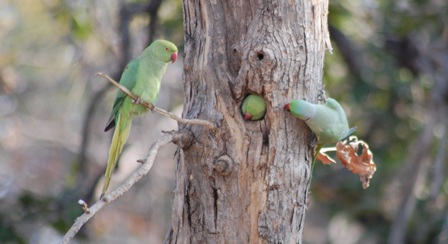“My heart was brimming with the longing: to travel all those miles, sometimes nonstop, and come to your place. The urge was so strong, I couldn’t resist it. Oh! Just thinking about wallowing in the cool waters, relishing the scrumptious food aplenty, meeting friends from across the world, made me do a little jig. But where did it all go? I thought I lost my way. Hell no! I am at the right spot, but the marshy expanse of water is no where in sight. A few early birds were hanging around. Where do we go now after having flown…
-
-
By this time, they would’ve already set off to Kutch or getting ready for the journey. When we met them in December, they were busy feeding on the algae in the Sewri mudflats. Flamingos migrate to Maharashtra during winter after spending the breeding season in Kutch, Gujarat. Sewri, a port area in Mumbai, is one of their favourite hangouts. How did they choose to come to this derelict area? Maybe, the rich algae found in the muddy tracts that get exposed during low tides. Feeding on these algae that have a carotenoid pigment, these migratory birds turn rich pink by…
-
Tadoba has a rich bird life with over 160 varities either residing or visiting seasonally. The main lake in the middle and couple of other lakes mean that there are a fair amount of water birds as well – Cormorants, herons, ibis, storks, varieties of ducks, bar-headed goose, buzzards, eagles, quails, purple swamphens, bronze winged jacana, lapwigs, common redshank, common and wood sandpipers and many more… A little cormorant by the side of the Tadoba lake (above) The red-wattled lapwig (above) Black Ibis (above) Green bee eater (above) We watched these three rose ringed parakeets (above) playing hide and seek.…


